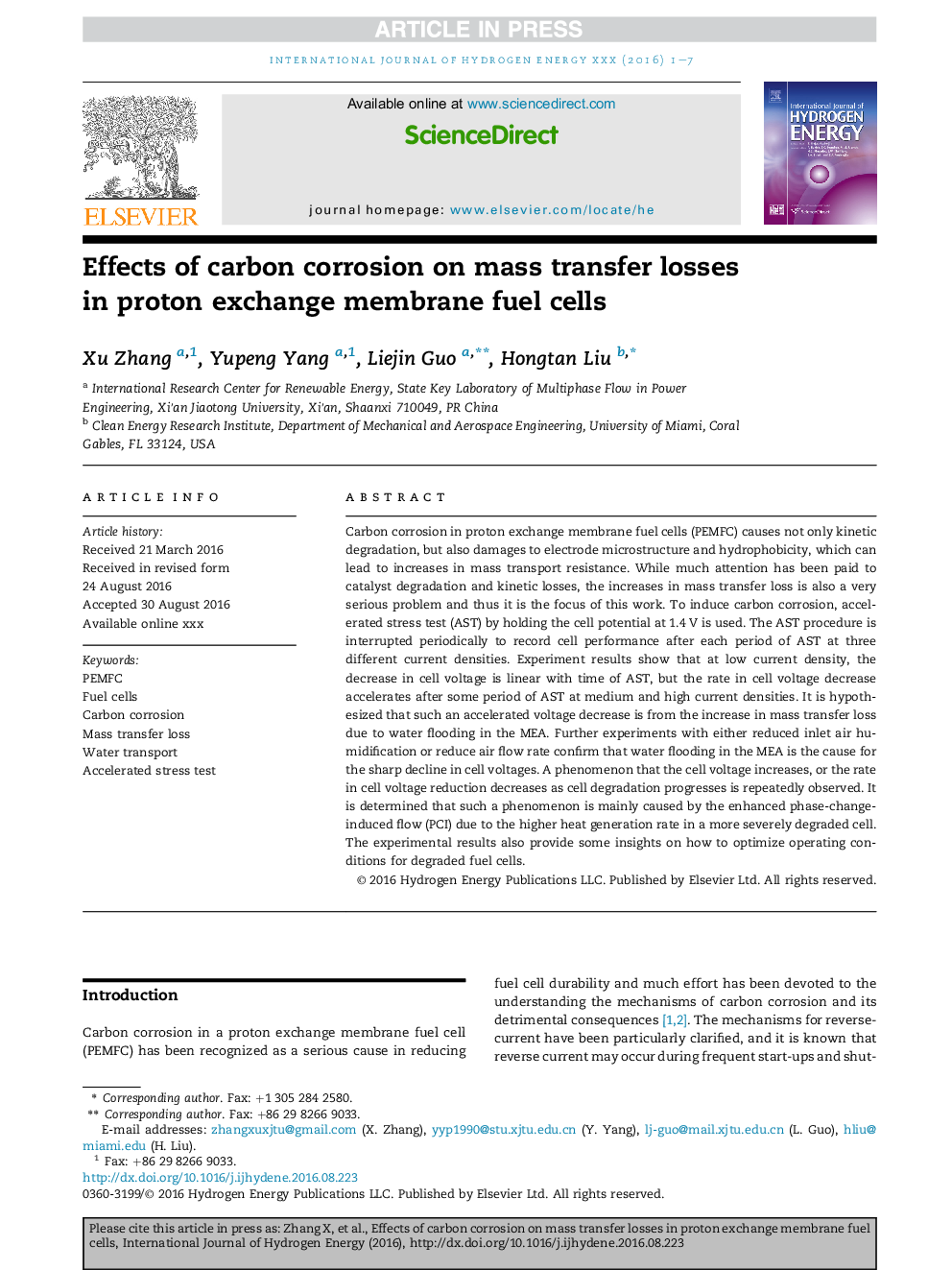| Article ID | Journal | Published Year | Pages | File Type |
|---|---|---|---|---|
| 5146387 | International Journal of Hydrogen Energy | 2017 | 7 Pages |
Abstract
Carbon corrosion in proton exchange membrane fuel cells (PEMFC) causes not only kinetic degradation, but also damages to electrode microstructure and hydrophobicity, which can lead to increases in mass transport resistance. While much attention has been paid to catalyst degradation and kinetic losses, the increases in mass transfer loss is also a very serious problem and thus it is the focus of this work. To induce carbon corrosion, accelerated stress test (AST) by holding the cell potential at 1.4Â V is used. The AST procedure is interrupted periodically to record cell performance after each period of AST at three different current densities. Experiment results show that at low current density, the decrease in cell voltage is linear with time of AST, but the rate in cell voltage decrease accelerates after some period of AST at medium and high current densities. It is hypothesized that such an accelerated voltage decrease is from the increase in mass transfer loss due to water flooding in the MEA. Further experiments with either reduced inlet air humidification or reduce air flow rate confirm that water flooding in the MEA is the cause for the sharp decline in cell voltages. A phenomenon that the cell voltage increases, or the rate in cell voltage reduction decreases as cell degradation progresses is repeatedly observed. It is determined that such a phenomenon is mainly caused by the enhanced phase-change-induced flow (PCI) due to the higher heat generation rate in a more severely degraded cell. The experimental results also provide some insights on how to optimize operating conditions for degraded fuel cells.
Related Topics
Physical Sciences and Engineering
Chemistry
Electrochemistry
Authors
Xu Zhang, Yupeng Yang, Liejin Guo, Hongtan Liu,
